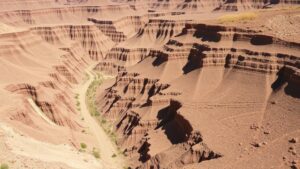How the Witwatersrand Goldfields Turned South Africa Into a Mining Powerhouse
The Witwatersrand Goldfields: A Catalyst for South Africas Mining Dominance
The Witwatersrand Goldfields, located in the northeastern part of South Africa, played a pivotal role in transforming the nation into a leading mining powerhouse. The discovery of gold in this region in 1886 set off a transformative economic and social revolution, marking the dawn of a new era for South Africa. This article explores how the goldfields catalyzed the development of the mining sector and significantly influenced both local and global economies.
The Discovery of Gold
The discovery of gold on the Witwatersrand coincided with a period of rapid industrialization. George Harrison, a prospector, made the initial discovery, which was soon followed by others. By 1887, the first gold was extracted, and a gold rush began that attracted thousands of fortune seekers from around the world. This influx of miners and speculators laid the groundwork for the establishment of Johannesburg, now one of South Africas largest cities.
The Witwatersrand Goldfields generated substantial wealth for the colony of the Cape, and later for the Union of South Africa. By the early 1900s, South Africa had become the largest producer of gold in the world, accounting for over 50% of global production at its peak in 1970.
- In 1886, 2.5 million ounces of gold were produced.
- By 1932, the annual output reached an astonishing 6.1 million ounces.
This influx of gold revenue enabled rapid infrastructure development, supporting the establishment of railways, roads, and communication systems that further integrated the mining sector into the economy. For example, the construction of the Rand Johannesburg Railway allowed for the efficient transport of equipment and labor to mining sites.
Labor Market Dynamics
The demand for labor drove significant changes in the labor market and demographics of the region. As gold mining expanded, large numbers of migrant workers from diverse backgrounds were attracted to the mines. South African economy became heavily dependent on migrant labor, notably from surrounding countries like Lesotho, Mozambique, and Botswana.
This workforce not only sustained the mining operations but also contributed to the economic ecosystem surrounding it. The establishment of townships and support services, including shops and schools, highlighted the socioeconomic transformation driven by mining activities.
Technological Advancements in Mining
The Witwatersrand Goldfields also spurred innovation in mining technology. The geological complexity of the gold deposits required advanced extraction techniques. South African mining companies pioneered various mining methods, including deep-level mining and mechanization, which significantly increased productivity and yielded higher return on investment.
Examples include:
- The introduction of airleg mining, which improved the extraction of gold at greater depths.
- The implementation of cyanide extraction methods, which enhanced recovery rates and reduced environmental impact.
Challenges and Environmental Considerations
Despite the economic benefits, the mining industry also faced significant challenges, including labor strikes, safety issues, and environmental degradation. The struggle for labor rights led to intense conflicts, such as the 1922 Rand Rebellion, which highlighted the tensions between mine owners and workers over poor working conditions and wages.
Also, mining operations have had long-term environmental consequences, including land degradation, water contamination, and habitat destruction. Responsible mining practices and regulations have since become critical discussions within the sector.
Conclusion: The Lasting Legacy of the Witwatersrand Goldfields
The Witwatersrand Goldfields fundamentally transformed South Africa into a mining powerhouse. It not only contributed to the nations wealth but also catalyzed technological advancements and shaped labor dynamics. While the benefits of gold mining have been substantial, the challenges present ongoing discussions regarding responsible mining practices and sustainability. The legacy of the Witwatersrand Goldfields serves as a testament to the complex interplay between natural resources and economic development.
For policymakers, industry leaders, and community stakeholders, recognizing the historical context of the mining sector in South Africa is vital for future developments. As the global demand for minerals and resources continues to evolve, the experiences of the Witwatersrand Goldfields can guide contemporary mining practices towards a more sustainable model that balances economic growth with environmental stewardship.


